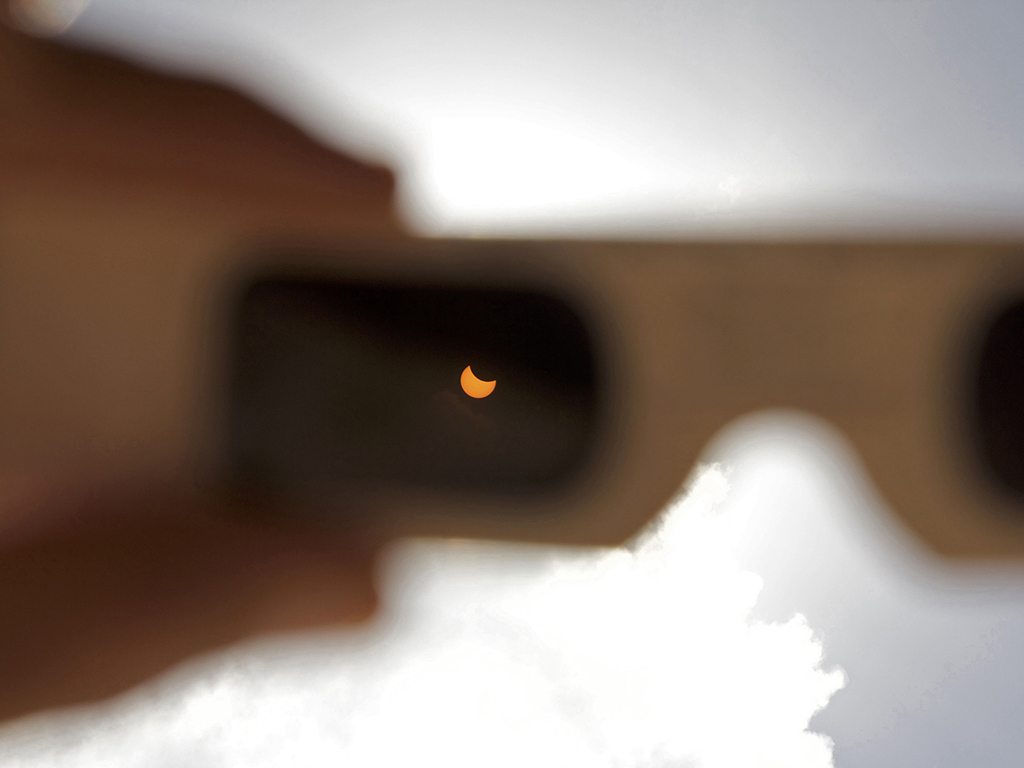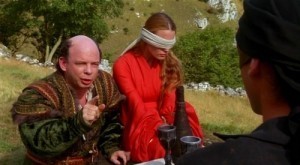America will experience a total eclipse this month. Even if you aren’t in the path of totality on August 21, you will experience a partial eclipse, where the Moon blocks some portion of the Sun. Millions of Americans will be tempted to look up at the eclipse, which violates one of the most basic rules of astronomy: Do NOT look directly at the Sun. This rule always applies, even during a partial eclipse when the Sun looks like a crescent. You can permanently damage your eyes, so don’t do it. Fortunately, there are special eclipse glasses you can get that allow you to watch the eclipse without harming your eyes. Unfortunately, some eclipse glasses aren’t safe to use, so you shouldn’t use any eclipse glasses that haven’t been verified as safe.
The danger of looking at the Sun is partly due to its extreme brightness, but it’s mainly due to two things you can’t see. Infrared and ultraviolet radiation. Infrared light is the type we feel as heat, such as the warmth that radiates from a campfire. If you stare at the Sun too long, its infrared light can overheat your retinas and damage them. Ultraviolet light is what gives us sunburns. Just as our skin can become damaged due to UV exposure, so can our eyes. If you’ve ever experienced a sunburn, you’ve noticed that you aren’t aware of the burn until its too late. The same is true with damage to your eyes. You might not notice a problem until you have already damaged your eyes.
Eclipse glasses are designed to block the harmful infrared and ultraviolet light from the Sun. The latest manufacturing standard, ISO 12312-2, allows you to view the Sun safely for extended periods of time. You should still make sure you have sunscreen on your face, but proper eclipse glasses will make sure you won’t harm your eyes. Unfortunately, demand for eclipse glasses means some folks are selling eclipse glasses that aren’t safe. They don’t block enough UV and infrared to be safe. Some of these fake glasses even claim to meet the ISO 12312-2 standard. It takes a special kind of evil to risk blinding children for a quick buck. Unfortunately his means you can’t simply trust glasses with the ISO standard printed on them.
The only way to be sure your glasses are safe is to confirm the source of the eclipse glasses. The American Astronomical Society has compiled a list of manufacturers verified to be in compliance with the ISO standard, as well as a list of vendors that only sell from verified sources. If your glasses came from this list, then you should be good to go.
https://eclipse.aas.org/resources/solar-filters
Libraries and science museums are also a big source of eclipse glasses. In many cases they are giving them away for free, particularly to folks who can’t afford them. If you got a pair from a library or science museum, they are almost certainly fine. If you aren’t sure, just contact them to confirm the source. The biggest danger is if you purchased them online from a source not listed on the AAS resource page. They might be fine, but it’s hard to be sure. It’s better to be safe than sorry.

Use caution when viewing the eclipse. Credit: Rick Fienberg / TravelQuest International / Wilderness Travel
Once you have good eclipse glasses, proper safety is still important. Make sure that the glasses are not damaged or scratched, and don’t look towards the Sun unless your eclipse glasses are firmly in place. Make sure your children know the safety rules, and keep your eye on them while they view the eclipse. During the period of totality, you can look at the eclipse without glasses, but only when the Moon completely blocks the Sun.
If you don’t have eclipse glasses on August 21, don’t try using a substitute. Sunglasses are not enough. Welding visors are not enough. Don’t risk your eyes using them. Instead, build yourself a pinhole camera. They are simple to make, and you can watch the eclipse without ever risking your eyes.












Comments
Brian, what I didn’t find in any website is if it is safe to look at the Sun through a completly velated X-ray film. I just only found that “never use an X-ray film with parts not obscured”, which is obvious, but what about using them if you can use only the parts that are “black”? Sometimes I have stacked two completly black pieces of these films and the Sun is still seen (not with three of them stacked, with only one the Sun still is too shiny)
Honestly, just don’t. The eclipse glasses are cheap (and in many cases free), and they are designed for eclipse viewing. Instead of trying to piece together something, contact your local libraries. Many of them have plenty of eclipse glasses.
I remember in the 70’s, my sister worked at the hospital and the hospital was handing out cut up x-ray sheets and we stacked 3 together to view the sun…now, like you said it makes mention NEVER to use x-ray material….could it be to get us to spend 20.00 a pair?
I would say $20 solar glasses are a rip off. The X-ray material isn’t designed to look at the Sun, so it isn’t a good option. If you don’t already have eclipse glasses, then I would recommend building a simple pinhole camera, Or even just looking at the shadow of a flat cheese grater. You’ll see everything there is to see for the eclipse without risking your eyes.
In Argentina (the f… country where I live) we don’t have plenty access to the variety in brands and qualities of these kind of things. Moreover, I live in a city where there aren’t any eclipse glasses at all!! And in the case any of them came from USA or wherever to here, they would be of lowest quality you have there, and would be sold at more than double their real price. Of course, forget “free” ones!!! That’s why we most of the time have to manage to do alternative things.
Ah, then a good alternative is a pinhole camera. You can make one out of a cardboard box, or even just a sheet of paper.
Odd that I received an email from Amazon about my Daylight Sky Plastic Eclipse Glasses advising me that they were no good and should not be used. Now, on the American Astronomical Society list of safe eclipse glasses are the exact ones Amazon says don’t use. Any suggestions? No time or money to purchase new eclipse glasses, plus I gave a pair to my sister and a friend. I am wondering if Amazon “jumped the gun”. Many thanks.
Amazon likely erred on the side of caution. The lists on the AAS site are the best recommendation I know of.
I got some also from Amazon and got the same message. These as far as I can tell are not on the approved list. But if I may, let me tell you this: I went to an optometrist who had an UV pen and a Transition lens – the ones that turn in sunlight because of the UV… I tested each lens on each pair and they all blocked the UV. The glasses are also very dark – i cannot see any light bulb filaments or the smartphone flashlight or other tests and outside I cannot see anything but the sun. Do you think these would be okay?
No. It sounds like infrared light is also a major concern.